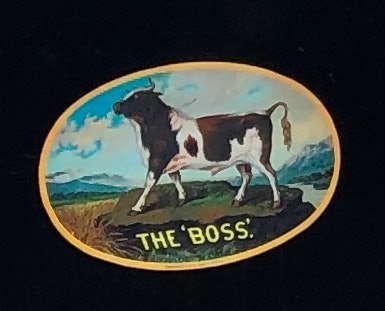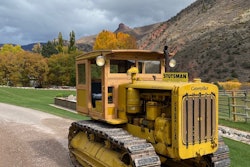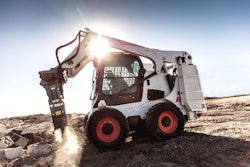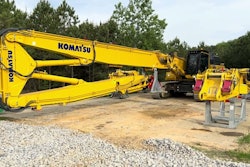Resembling a locomotive engine, thin black smoke billows out of the stack of the black and red 1918 Russell steam tractor with its big yellow spoke wheels.
With a steady rumble, its traction engine powers a belt that propels an Allis-Chalmers Superior-McCully gyratory crusher from the 1930s. “The Boss” logo on the back side of the tractor – a bull standing proudly on a rock – symbolizes what Russell & Company at the time called, “The strongest farm traction engine built.”
 The Russell & Company logoEquipment World
The Russell & Company logoEquipment World
It's also a testament to a power source that has since fallen out of use for construction and farm equipment but was no less important in its day than diesel is today.
“Steam power is probably the most awesome power there is,” says Lashaway, while taking a break from the crushing operation. “It's very powerful. It injects steam on both ends of the cylinder. So it's got a power stroke in both directions unlike an internal combustion engine, which only fires at the top and then it has to go down and come back up to get another power stroke.”
(To see how he starts the tractor and watch it in action, be sure to check out the video at the end of this story.)
 Jim Lashaway's great uncle used this 1916 Frick steam tractor for his threshing business. The family still demonstrates the old tractor at shows.Jim Lashaway
Jim Lashaway's great uncle used this 1916 Frick steam tractor for his threshing business. The family still demonstrates the old tractor at shows.Jim Lashaway










